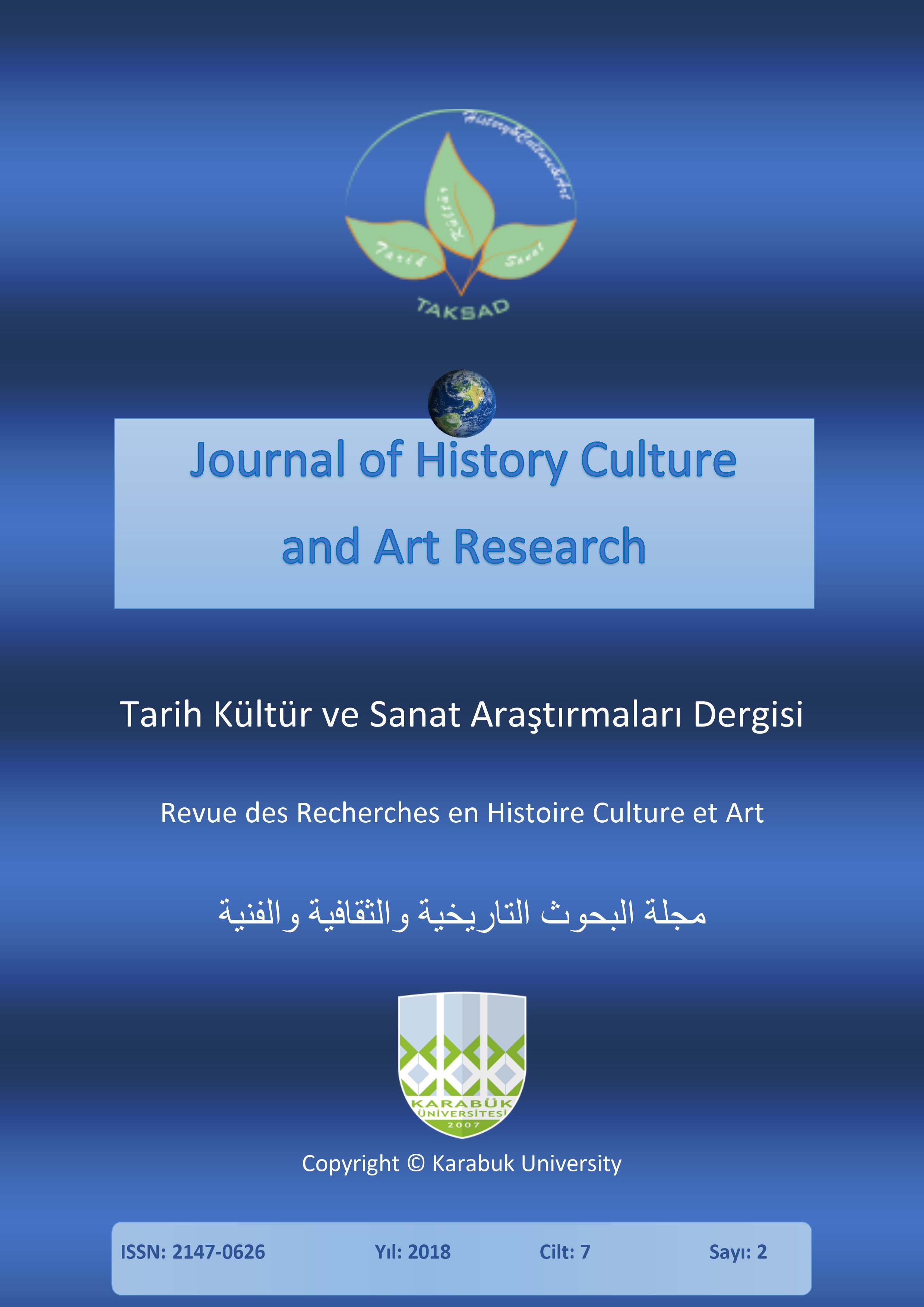European Regional Conflicts of the Second Half of the 1930s and the Evolution of the National-Socialist Image of Enemy
DOI:
https://doi.org/10.7596/taksad.v7i2.1598Keywords:
Nazism, the image of enemy, the propaganda war, Introduction of Hitler troops into the Rhine zone (1936), Anschluss of Austria (1938), the Spanish Civil War (1936-1939), Munich conference (1938).Abstract
Regional conflicts in West and Central Europe, in the second half of the 1930s symbolized the collapse of the Versailles system, polarizing the situation and affecting the balance of power on the continent. All of them had international aspects, including propaganda aspect. European regional conflicts (1936-1939) have become a convenient case for approbation of the "old" Nazi ideological postulates as well as for development of "new" ones. The result of such propaganda work was the formation of an "enemy image", actively used in the future on the fronts of World War II. The article deals with the design and implementation by the Nazis in the German and European environment proper of the image of an "external" enemy, on example of the introduction of Hitler troops into the Rhine zone (1936), the Spanish Civil War (1936-1939), the Anschluss of Austria (1938) and Munich conference (1938).
References
Angriff (1938). 1, 9, 18. Juli; 2, 9, 10, 11, 15, 30. Aug.; Völkischer Beobachter. 1938. 1, 6, 17. Juli u.a.
Archive of foreign policy of the Russian Federation (AVP RF). Fund 82, record series 19, file 24, pp: 214-215. (in Russian).
AVP RF. Fund 05, record series 18, file 56, pp: 177. (in Russian).
AVP RF. Fund 56, record series 23, file 6, pp: 28. (in Russian).
AVP RF. Fund 82, record series 20, file 16, pp: 333. Polpredstvo SSSR v Germanii. Otdel pechati, Berlin, 1936. (in Russian).
Berliner Börsen Zeitung (1936). 17. Apr.
Berliner Börsen-Zeitung (1936). 4, 16, 18, 20. Aug.
Der Angriff (1936). 17. Apr.
Der Angriff (1938). 11, 12, 13. März.
Deutsche Allgemeine Zeitung (1936). 17, 21, 22. Aug.
Deutsche Allgemeine Zeitung (1936). 18. Apr.
Deutsche Allgemeine Zeitung (1938). 13, 14, 18. März;
Deutschland (1936). 22. Aug.
Dokumenty vneshney politiki SSSR (1977). T. 21. 1 yanvarya - 31 dekabrya 1938. M.: 122. (in Russian).
Domarus, M. (1962). Hitler. Reden und Proklamationen 1932-1945: 2 Bde. Bd. 1. Triumph (1932-1938). Würzburg: 587-596, 793.
Frankfurter Zeitung (1938). 13, 17. März.
Frei, N. (1983). Nationalsozialistische Presse und Propaganda. In: Das Dritte Reich: Herrschaftsstruktur und Geschichte. München. Inc.:152-175.
Geary D. (1993). Hitler and Nazism. Routledge. p. 82.
Hardy A. G. (1967). Hitler’s Secret Weapon. The “Managed” Press and Propaganda Machine of Nazi Germany. N.Y.-Wash. p. 344.
Herzstein R. E. (1978). War that Hitler Won. Nazi Propaganda: The Most Infamous Propaganda Campaign in History. N.Y. p. 491.
Hitler, A. (1936). Mein Kampf. MünchenS. p. 196.
Kölnische Zeitung. (1938). 13, 15. März; 1938, 4. April.
Kreiz Zeitung (1936). 17, 18. Aug.
National Zeitung (1936). 20, 21. Nov.
NSZ - Rheinfront (1936). 15. Apr.
RGVA. Fund 1493 R, record series 1, file 9, p. 197. (in Russian).
Russian state military archive (RGVA). Fund 1493 K, record series 1, file 3, p. 132. (in Russian).
Shirer U. (2002). Berlinskiy dnevnik. Yevropa nakanune Vtoroy mirovoy voyny glazami amerikanskogo korrespondenta. Per. s angl. M.: 48, 112. (in Russian).
Völkischer Beobachter (1936). 16, 17, 18, 23, 27, 29. Aug.;
Völkischer Beobachter (1936). 16. Apr.
Völkischer Beobachter (1936). 4, 5, 8, 9, 12, 19, 29. Sept.
Völkischer Beobachter (1938). 12, 13, 14, 18. März.
Yaroshenko, V. N. (1986). Chernyy efir: Podryvnaya propaganda v sisteme burzhu-aznogo vneshnepoliticheskogo radioveshchaniya. M.: 51-52. (in Russian).
Zeman Z. A. (1973). Nazi Propaganda. Sec. ed. L.-N.Y. 260 p., etc.
Downloads
Published
How to Cite
Issue
Section
License
All papers licensed under Creative Commons 4.0 CC-BY.- Share — copy and redistribute the material in any medium or format
- Adapt — remix, transform, and build upon the material for any purpose, even commercially.
Under the following terms:
Attribution — You must give appropriate credit, provide a link to the license, and indicate if changes were made. You may do so in any reasonable manner, but not in any way that suggests the licensor endorses you or your use.
- No additional restrictions — You may not apply legal terms or technological measures that legally restrict others from doing anything the license permits.







